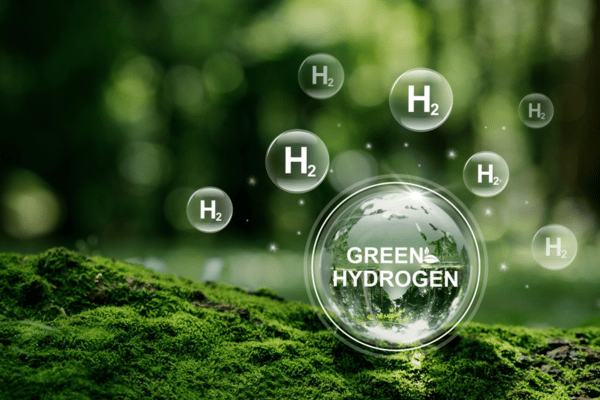
Green Hydrogen Market Overview
The global green hydrogen market is emerging as a vital pillar of the world’s transition towards clean and sustainable energy. Green hydrogen is produced using renewable energy sources like solar, wind, and geothermal power through processes such as electrolysis, which split water into hydrogen and oxygen without carbon emissions. As industries and governments commit to net-zero targets, green hydrogen is gaining traction as a viable solution for decarbonizing hard-to-abate sectors such as heavy industry, mobility, and power generation. With its versatile applications and alignment with global climate goals, the green hydrogen sector is positioned for rapid expansion in the coming decade.
Green Hydrogen Market Size
In 2024, the global green hydrogen market size reached an impressive volume of 1.64 million tons, demonstrating a notable shift from pilot-scale projects to large-scale production. This robust market size indicates increasing investments and supportive policies worldwide, encouraging production facilities and infrastructure developments. By 2034, the market is projected to surge to 84.95 million tons, growing at a remarkable CAGR of 48.40% between 2025 and 2034. This exponential rise showcases not just the growing demand for clean fuels but also the technological advancements making large-scale electrolysis more cost-effective. Major economies are ramping up production capacity and forming cross-border partnerships to create green hydrogen corridors, driving future growth in both established and emerging regions.
Key Market Trends Driving Green Hydrogen
One of the defining trends in the green hydrogen market is the rapid technological innovation in electrolyser technologies, which is improving efficiency and reducing production costs. Global collaborations and public-private partnerships are also fostering massive green hydrogen projects, with countries like Germany, Australia, and India taking bold steps. Increasing use in mobility, such as fuel-cell vehicles and green hydrogen fueling stations, is transforming the transport sector. Moreover, grid injection and utility-scale storage projects are integrating green hydrogen into national grids, enabling better renewable energy balancing. Sustainability-conscious investors are focusing on green hydrogen startups, driving innovation in storage, transport, and end-use applications. This synergy of policy support, innovation, and investment is positioning green hydrogen as a mainstream clean energy source.
Market Opportunities and Challenges
As the world accelerates toward carbon neutrality, green hydrogen presents immense opportunities for industries looking to decarbonize operations, especially sectors like steel, cement, and chemicals. The growing adoption in grid balancing and storage offers a solution to the intermittent nature of renewables. Export opportunities are expanding as countries with abundant renewable energy look to become major green hydrogen suppliers. However, significant challenges remain, including high upfront capital costs, infrastructure limitations for transport and storage, and the need for standardized regulatory frameworks across regions. Overcoming these barriers through technological innovation, government incentives, and global cooperation will be crucial for tapping the full potential of the green hydrogen market.
Segmentation
Breakup by Technology/Electrolyser:
Alkaline Water Electrolysis
PEM (Proton Exchange Membrane)
SOEC (Solid Oxide Fuel Cell)
Breakup by End User:
Transport / Mobility
Utilities
Grid Injection
Industrial
Others
Breakup by Source:
Solar
Wind
Geothermal
Others
Breakup by Capacity:
Up to 500 KW
501-1500 KW
1501-5000 KW
Above 5000 KW
Breakup by Regions:
North America
Europe
Asia Pacific
Latin America
Middle East and Africa
Green Hydrogen Market Growth Prospects
The green hydrogen market’s anticipated CAGR of 59.70% during 2025–2034 highlights its unmatched growth momentum in the clean energy space. Investments are pouring into mega green hydrogen hubs and electrolyser manufacturing plants to scale up production and reduce costs. Emerging economies with rich renewable energy resources are positioning themselves as future export powerhouses, attracting foreign investments and technology transfers. The market growth is also being accelerated by stricter emission norms and green energy targets globally. As hydrogen pipelines, storage infrastructure, and refueling networks develop, the barriers to adoption are steadily falling. This creates a promising scenario where green hydrogen not only replaces grey hydrogen in industries but also expands into new sectors like aviation and shipping.
Green Hydrogen Market Forecast Outlook
Looking ahead, the global green hydrogen market is poised to leap from a volume of 1.40 million tons in 2024 to an estimated 151.07 million tons by 2034. This massive scale-up will be driven by cost reductions in renewable electricity and electrolysers, favorable policies, and strategic alliances among major players. Countries across Europe, Asia Pacific, and North America are setting ambitious production and consumption targets, encouraging cross-border trade of green hydrogen and derivatives like ammonia. The next decade will witness significant infrastructure buildout, including hydrogen refueling stations, storage terminals, and dedicated shipping routes. Companies that invest early in technology, partnerships, and capacity expansion will shape the future green hydrogen economy, ensuring a steady transition from fossil-based hydrogen to green hydrogen at scale.
Competitor Analysis in the Green Hydrogen Market
Key players are spearheading technological advancements, capacity expansions, and strategic partnerships to secure leadership positions in the booming green hydrogen market.
Air Liquide: Focuses on large-scale renewable hydrogen projects globally.
Linde Plc: Leading provider of hydrogen production and distribution technologies.
Air Products & Chemicals Inc.: Invests in mega hydrogen production hubs.
Engie: Develops integrated green hydrogen infrastructure and projects.
Uniper SE: Specializes in green hydrogen production and storage solutions.
Siemens Energy AG: Innovates in electrolyser technology and hydrogen ecosystems.
Reliance Industries Ltd: Investing in India’s largest green hydrogen capacity.
Madoqua Renewables: Pioneers renewable hydrogen and ammonia projects in Europe.
Tecnimont Marie: Offers engineering solutions for hydrogen plants worldwide.
Insight from Expert Market Research: Green Hydrogen Market
Tapping the potential of renewable hydrogen calls for informed decision-making and reliable data. Expert Market Research offers in-depth insights into the global green hydrogen market’s evolving landscape, highlighting how rapid capacity additions and technological breakthroughs are reshaping supply chains and business models. Their forecasts indicate that strong policy support and declining renewable energy costs will play decisive roles in making green hydrogen commercially viable and widely accessible. For stakeholders aiming to stay ahead, Expert Market Research serves as a trusted source for understanding demand shifts, investment hotspots, and the road to a carbon-neutral future.




















Write a comment ...